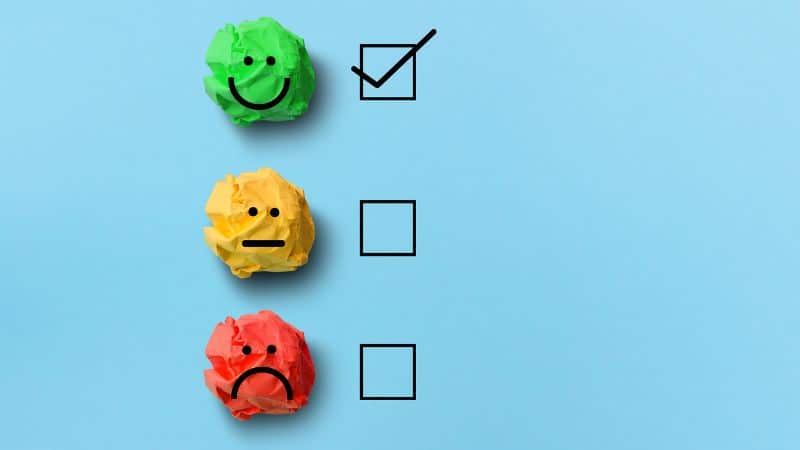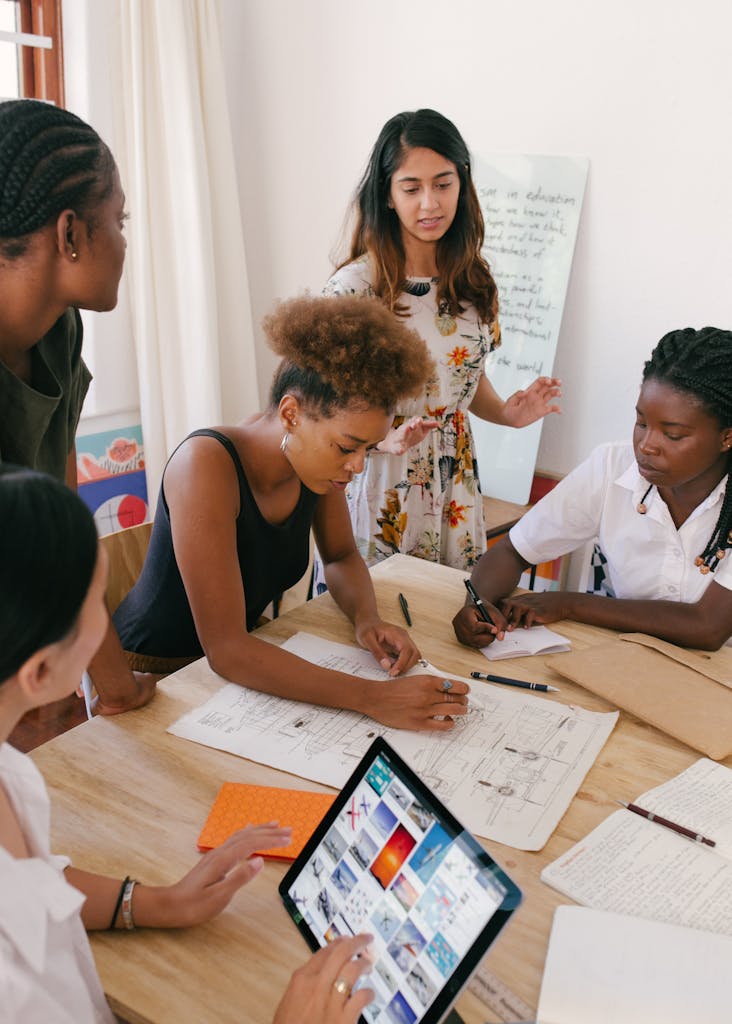How do we measure the success of a training session? Is it by the smiles on participants’ faces, the notes they’ve taken, or the change in their workplace behavior and results?
The answer lies in a comprehensive approach known as the 4-level training evaluation.
- Reaction – How did participants respond to the training? This is an immediate gauge of how well the training was received.
- Learning – What knowledge or skills have participants gained? This examines the actual learnings against the intended outcomes.
- Behavior – Are participants applying what they learned in their roles? This delves into the practical application post-training.
- Results – What tangible outcomes or changes have occurred due to the training? This focuses on real-world impacts, be it in terms of increased sales, improved customer satisfaction, or other metrics.

Level 1 Training Evaluation
While all levels are essential, the first level—Reaction—is often the most immediate and, if not executed innovatively, can be the most superficial.
Yet, it’s the foundation upon which the other levels build. So, how do we ensure we’re effectively gauging reactions in a manner that’s both insightful and engaging?
Dive in as we explore 12 creative ways to elevate your Level 1 evaluation, ensuring that you capture genuine, in-depth reactions right from the get-go.
Leadership Journey Maps
A Leadership Journey Map is a visual representation that trainees create to showcase their perceptions of leadership before and after the training. It allows participants to reflect on their progression, charting out how their perspectives or skills might have changed.
Humans are innately visual creatures. By translating their feelings and learnings into a visual map, trainees can better articulate and comprehend their journey. It also taps into their creative side, making the feedback process more interactive and personal.
Imagine a trainee drawing a road with several pitstops. The first stop, labeled “Before Training,” might have a sketch of a confused face or a question mark, symbolizing uncertainty. As the road progresses, there might be signs like “New Insights” or “Aha Moments,” culminating in a bright sun or a trophy at the “After Training” stop, symbolizing enlightenment or achievement.
Making the Most of Leadership Journey Maps: Provide trainees with a mix of materials—colored pens, stickers, or even digital tools. The more options they have, the better they can express themselves. Encourage them to think outside the box and remind them there’s no right or wrong way to create their map. It’s their journey, after all.
Digital Polling with Real-time Results
Digital polling involves using technology platforms to instantly gauge participants’ reactions and thoughts during or after various training modules. Trainees can easily submit their feedback or answer specific questions, providing immediate insights into their perceptions.
In today’s digital age, people are accustomed to interacting with online platforms and appreciate the immediacy of real-time results. Digital polling not only offers swift feedback but also allows trainees to see collective responses, fostering a sense of group reflection.
For instance, after a module on “Effective Communication in Leadership,” a poll could ask: “How confident do you now feel about handling conflicts at work?” Trainees could choose from options ranging from “Not Confident” to “Extremely Confident.” Viewing the real-time results, trainees might realize that many of their peers also feel more empowered, reinforcing the training’s effectiveness.
Maximizing Digital Polling: Utilize user-friendly polling platforms like Mentimeter, Slido, or Poll Everywhere. Ensure the questions are clear and concise, and occasionally include open-ended ones to capture in-depth feedback. Remember, the goal is to make it as seamless as possible for participants to share their reactions.
Two-Word Feedback
The Two-Word Feedback method challenges participants to condense their immediate reactions to training into just two words. This simplification pushes trainees to hone in on their most prominent feelings or takeaways.
In our world of information overload, brevity can be powerful. By asking participants to distill their feedback into two words, you’re prompting them to deeply reflect and identify the core essence of their experience. It’s a quick method, but its simplicity often results in profound insights.
For example, after a session on “Leading with Empathy,” trainees might share feedback like “Eye-opening” or “Deeply resonant.” Such succinct feedback can quickly highlight the most impactful aspects of the training.
Harnessing the Power of Two-Word Feedback: Create a dedicated space, like a physical board or a digital platform, where participants can post their words. Over time, you’ll see patterns and common themes emerging, providing a clear snapshot of the training’s most resonant elements. Encourage honesty; sometimes, even critical feedback like “Needs depth” can be invaluable for refinement.
Interactive Leadership Scenarios
Interactive Leadership Scenarios involve presenting participants with hypothetical leadership challenges and allowing them to suggest solutions. It’s a dynamic way to assess their grasp of the training content and gauge their immediate reactions to it.
Engaging participants in interactive exercises taps into their problem-solving abilities and creativity. Instead of passively receiving information, they actively apply what they’ve learned, making the feedback process more dynamic and revealing.
Imagine presenting a scenario where a leader faces resistance from their team on a new initiative. After the training module on “Leading Through Change,” ask participants how they would handle the situation. Responses might range from “Host a feedback session” to “Implement a pilot phase,” revealing their understanding and application of the training content.
Optimizing Interactive Leadership Scenarios: Rotate the types of challenges to cover various leadership aspects discussed in the training. Encourage group discussions, as collective brainstorming can lead to richer insights. Capture the feedback both during the exercise and afterwards, noting any shifts in perspective as the training progresses.
Feedback Capsules
Feedback Capsules involve setting up a dedicated space, like a physical box or a digital platform, where participants can drop in brief notes sharing their thoughts, feelings, or suggestions about the training as it progresses.
In a fast-paced training environment, having a go-to space for spontaneous reflections can be immensely valuable. It provides participants an outlet to share immediate, unfiltered reactions, capturing the essence of their experience in real-time.
Let’s say during a break, after a session on “Collaborative Leadership,” a participant feels a spark of insight. They quickly jot down, “Realized leadership isn’t about control, it’s about collaboration. More examples, please!” This instant feedback captures a pivotal moment of understanding and offers a suggestion for improvement.
Maximizing Feedback Capsules: If using a physical box, place it in an easily accessible spot and provide note-making materials. For digital platforms, ensure easy access and user-friendliness. Periodically remind participants about the capsule, encouraging them to share both eureka moments and areas they feel could be enhanced.
Digital Reaction Boards
Digital Reaction Boards are online platforms where participants can pin their immediate reactions, insights, or feelings related to the training. They can use text, images, gifs, or even videos to express themselves, making the feedback multi-dimensional.
The digital landscape is familiar territory for most modern professionals. Providing a space that mimics social media or online boards allows participants to interact in a manner that’s both comfortable and engaging. It also offers the advantage of anonymity, which can sometimes lead to more candid feedback.
For example, after a session on “Innovative Leadership,” a participant might pin a gif of a light bulb turning on with a caption saying, “Today’s session lit up so many ideas!” Another might attach a photo of a maze, commenting, “Still finding my way through some concepts. Can we revisit them?”
Getting the Best Out of Digital Reaction Boards: Platforms like Padlet, Trello, or Miro work well for this purpose. Ensure the board is easily accessible and that participants know how to use it. Regularly check the board to address any concerns, answer questions, or acknowledge insights, ensuring it remains an active two-way communication channel.
Peer Interviews
Peer Interviews involve pairing up participants to discuss and share their key takeaways, insights, or feelings post-training. This method allows for deeper reflection as participants engage in conversations, challenging and reinforcing their understanding through dialogue.
Discussing insights with a peer can provide clarity and depth to one’s own reflections. It can highlight different perspectives, reinforce common learnings, and foster a sense of camaraderie among participants. Plus, discussing with a peer can often lead to more genuine and unguarded feedback compared to sharing with a larger group or facilitator.
For instance, after a module on “Ethical Leadership,” one participant might share with their partner, “I never realized how often I faced ethical dilemmas in my role until today’s session.” Their partner might respond, “Same here. The session on handling gray areas was particularly eye-opening for me. How do you usually handle such situations?”
Enhancing Peer Interviews: Set clear guidelines for the discussion to keep it focused on the training content. Offer a few prompt questions to kickstart conversations, but also encourage free-flowing dialogue. After the interviews, bring the group together for a debrief, allowing pairs to share any major insights or discoveries with everyone. This can lead to further group-wide insights and discussions.
Emoji Feedback
The Emoji Feedback method involves using a variety of emojis that represent different emotions. After specific training modules or the entire session, participants select an emoji that best captures their immediate feelings or reactions.
In today’s digital age, emojis have become a universal language of sorts, effectively conveying emotions without words. By offering a range of emojis, participants can quickly and visually express their reactions, making the feedback process swift yet insightful.
Imagine a board with emojis ranging from a bright, beaming smiley to a contemplative face or even a confused expression. After a session on “Adaptive Leadership in Crisis,” a participant might choose a ‘mind-blown’ emoji, indicating a significant revelation, while another might select a ‘thinking’ face, indicating they’re still processing the information.
Optimizing Emoji Feedback: Whether using a physical board or a digital platform, ensure a diverse range of emojis to capture a spectrum of emotions. Encourage participants to add a brief note alongside their chosen emoji if they wish to elaborate on their choice. Reviewing the distribution of emojis after sessions can offer quick insights into how well the content resonated with the group.
Audio Reflections
Audio Reflections involve allowing participants to record short voice clips, sharing their immediate thoughts, feelings, or questions about the training. This method harnesses the power of spoken word, capturing nuances that written feedback might sometimes miss.
Speaking out loud can offer a different depth of reflection compared to writing. The tone, pauses, and emphasis in a voice can convey layers of emotion and understanding. Moreover, for some participants, speaking might be a more natural and comfortable mode of expression than writing.
For instance, after a deep-dive session into “Transformational Leadership,” a participant might record a message saying, “Today’s session really hit home. The part about inspiring change made me realize areas where I’ve been too directive. I want to explore more on how to truly inspire my team.”
Making the Most of Audio Reflections: Use user-friendly recording apps or platforms where participants can easily record and submit their reflections. Ensure they know that their recordings are confidential, which might encourage more open and honest feedback. Allocate some time post-session to listen to these reflections, and perhaps even share (with permission) insightful clips in future sessions to foster group discussions.
360-Degree Camera Feedback
The 360-Degree Camera Feedback involves setting up a camera booth where participants can record a quick video sharing their reactions to the training from all angles. This allows participants to speak freely, use body language, and even showcase any materials or notes they’ve taken during the session.
Video feedback captures the full essence of a participant’s reaction. It combines verbal feedback with visual cues like facial expressions and gestures. This multi-dimensional approach can offer richer insights than text-based feedback alone.
Imagine a participant, after a session on “Servant Leadership,” standing in the booth, holding up a diagram they sketched during the training. They point to various sections, saying, “This part about putting the team first really resonated with me. But I’m still grappling with this concept here,” pointing to another section, their facial expression showing deep contemplation.
Harnessing the Power of 360-Degree Feedback: Ensure the camera booth is set up in a quiet space to capture clear audio. Encourage participants to use props, notes, or any training materials to enrich their feedback. After collecting the videos, allocate time to watch and analyze them, picking up on both verbal insights and non-verbal cues. This feedback can be invaluable in refining future training sessions.
Interactive Doodle Board
An Interactive Doodle Board provides participants with a digital or physical canvas where they can sketch, doodle, or visually represent their thoughts and feelings related to the training session.
Drawing can be a therapeutic and revealing exercise. When participants put pen to paper (or stylus to screen), they can often express sentiments that might be hard to put into words. This method is particularly engaging for visual learners and those who enjoy artistic expression.
Consider a participant who, after a session on “Visionary Leadership,” draws a mountain peak with various paths leading to the top. They might annotate it with, “Multiple ways to lead, but all should lead to the vision at the peak.” Another might sketch a bridge, symbolizing the role of a leader in bridging gaps and connecting teams.
Optimizing the Interactive Doodle Board: If using a digital platform, tools like Miro or Jamboard can be beneficial. For physical boards, providing a variety of drawing tools can spark creativity. Encourage participants to explain their doodles briefly, either through annotations or by sharing with the group, to provide context to their drawings. Reviewing these doodles can offer unique insights into the training’s impact and areas for enhancement.
Personalized Hashtags
The Personalized Hashtags method encourages participants to create a unique hashtag that captures the essence of their feelings or takeaways from the training. This method taps into the current digital culture, making feedback trendy, concise, and shareable.
Hashtags are prevalent in today’s social media-driven world, serving as a quick summary of emotions, events, or sentiments. Crafting a personalized hashtag forces participants to distill their reactions into a compact yet impactful format, which can be both fun and enlightening.
For instance, after an intensive module on “Conflict Resolution in Leadership,” one participant might come up with “#PeacefulProblemSolver,” indicating their newfound approach to tackling disputes. Another participant, after a module on motivational leadership techniques, might coin “#InspireToAspire,” signifying their goal to inspire team members to aim higher.
Making Hashtags Work for You: Create a dedicated space, like a board or a digital forum, for participants to share their hashtags. This not only collates feedback but also allows participants to see others’ reactions, fostering group cohesion. Periodically, highlight some of the most impactful or creative hashtags in subsequent sessions, turning feedback into a continuous learning tool. Encourage honesty and creativity – the more genuine the hashtag, the more valuable the insight.
Taking the First Step in Your Evaluation Journey
Evaluating training is like piecing together a puzzle. Each level of evaluation adds a piece, giving a clearer picture of the training’s impact. While all pieces are essential, starting with a strong foundation — the Reaction level — sets the tone for the entire evaluation process.
You’ve explored 12 innovative ways to assess reactions. Now, it’s time to take action. Choose just one method that resonates with you. Maybe it’s the Leadership Journey Maps, or perhaps the Emoji Feedback caught your attention. Whatever it is, give it a try in your next training session. Starting with one method simplifies the process, making it manageable and achievable.
Remember, every journey begins with a single step. By enhancing your Level 1 evaluation, you’re not only getting valuable insights but also paving the way for a more comprehensive understanding of your training’s effectiveness. So, take that step today. Explore, experiment, and experience the difference.
If you’re building a business and you are playing to win…
Let’s install one shift that moves metrics.
→ Shift Experiences


